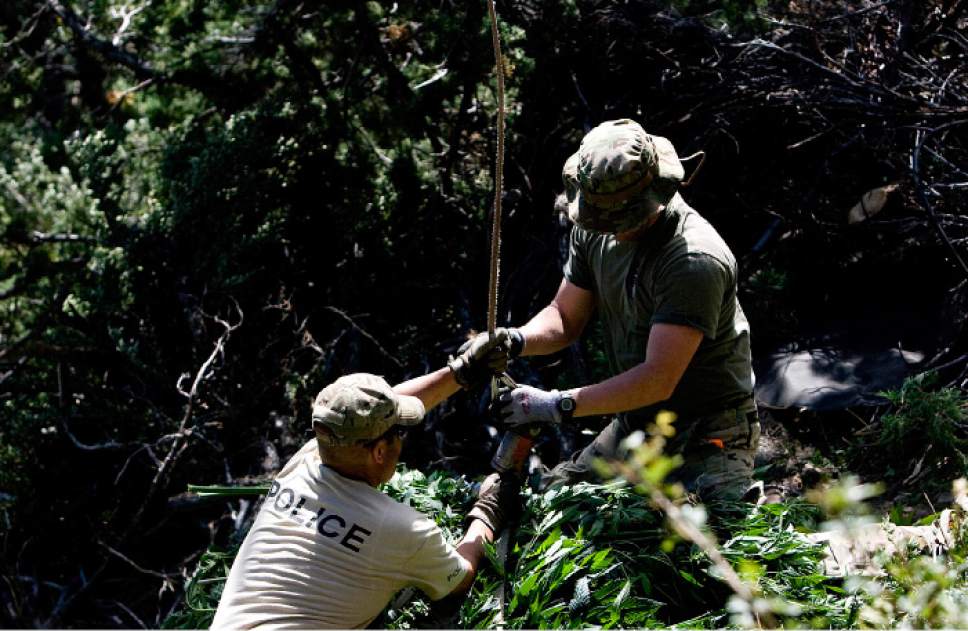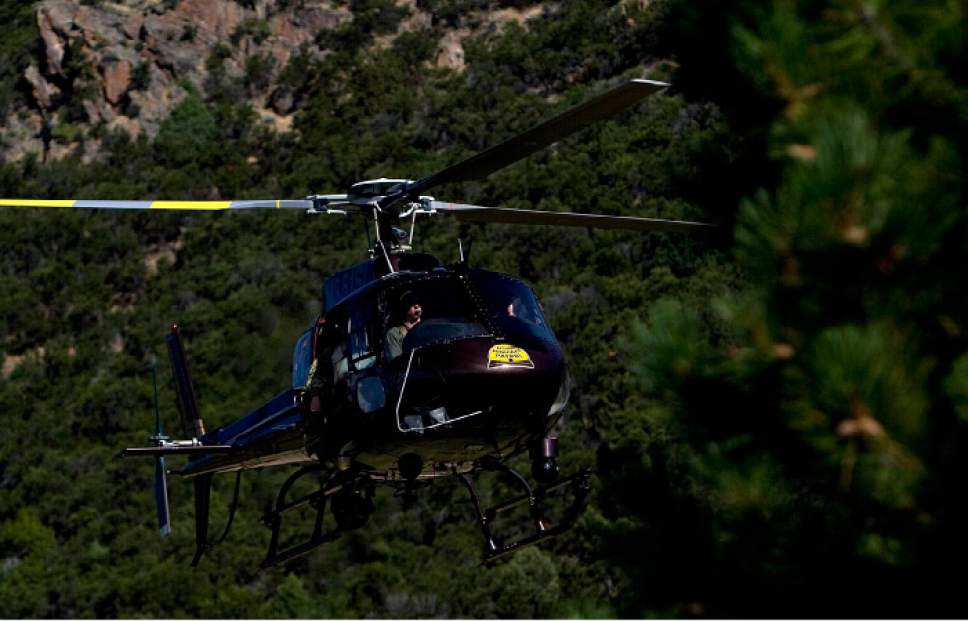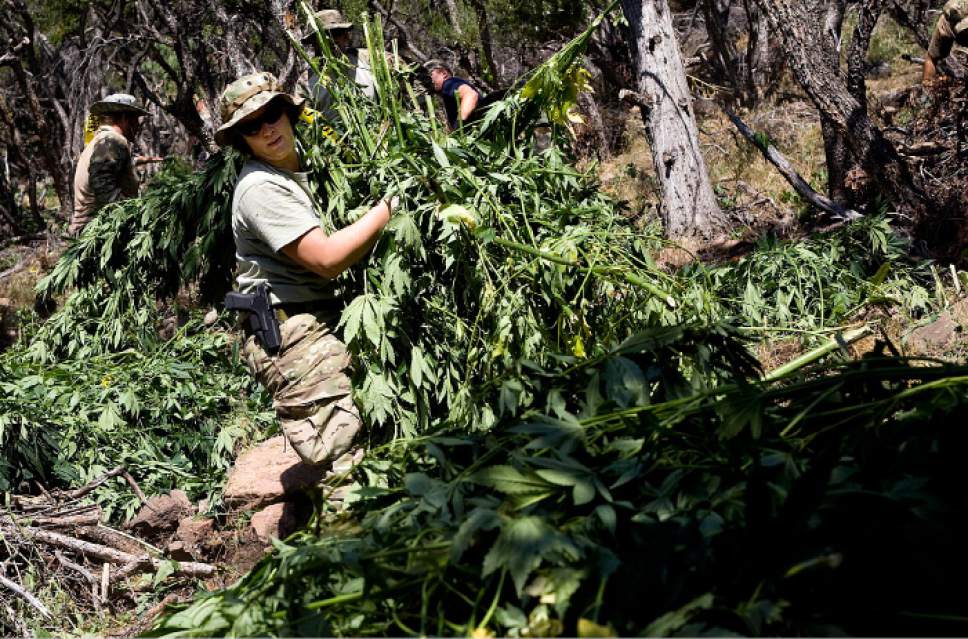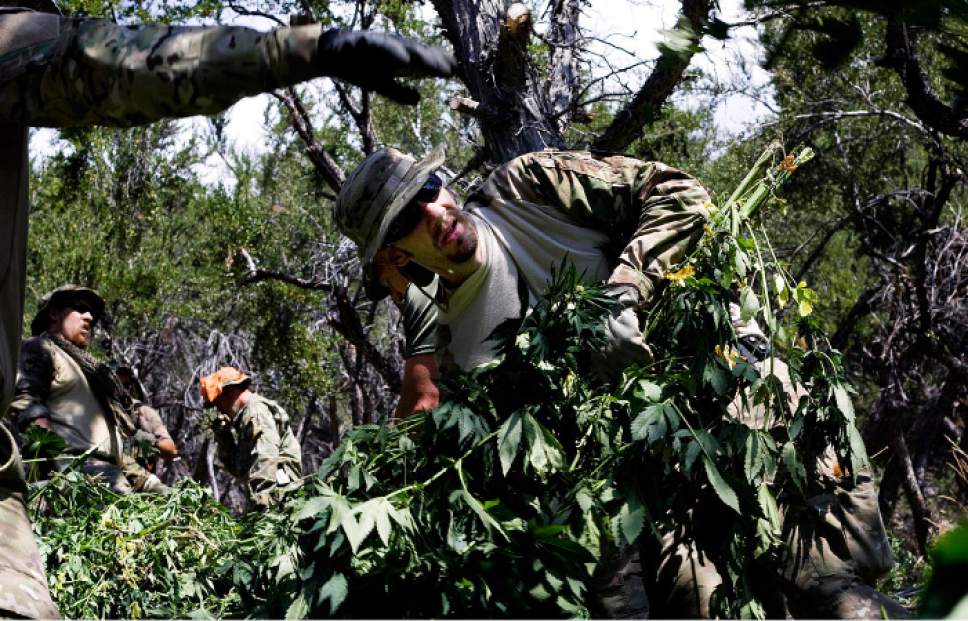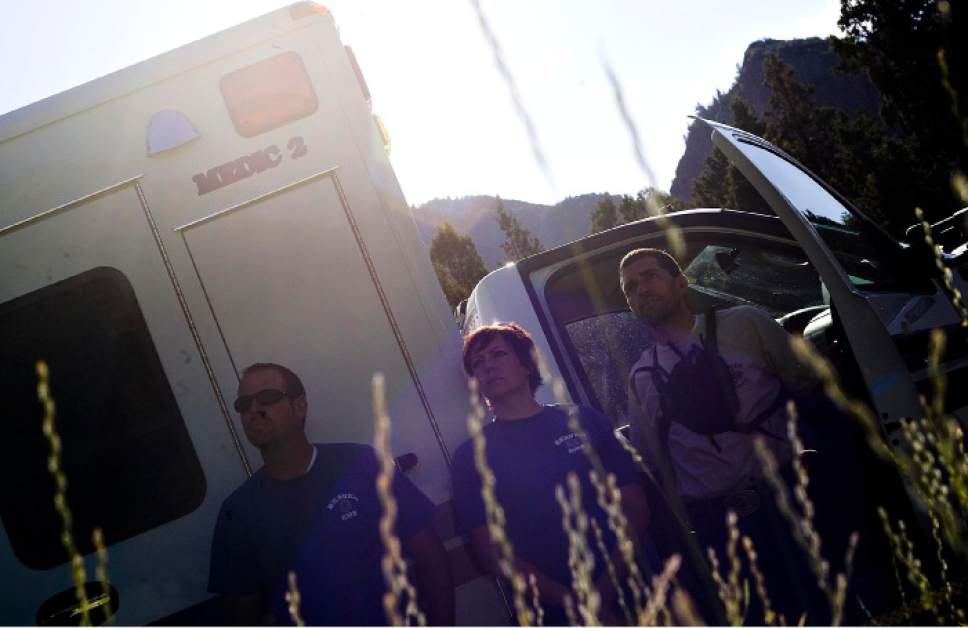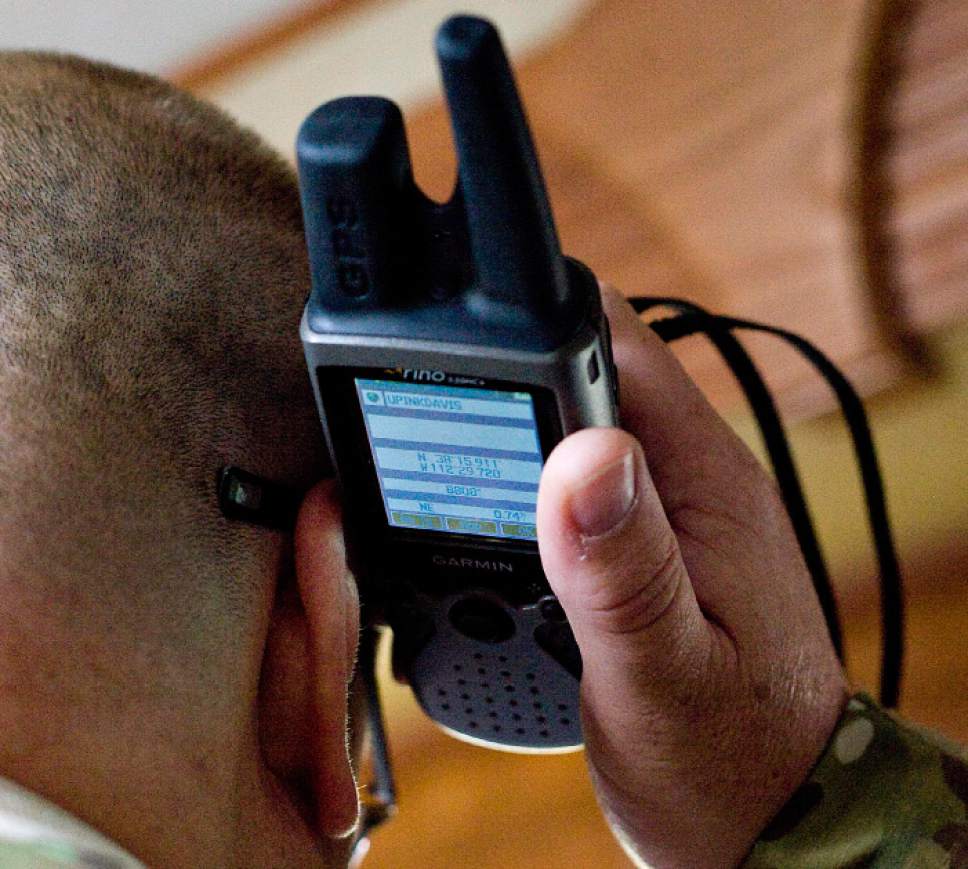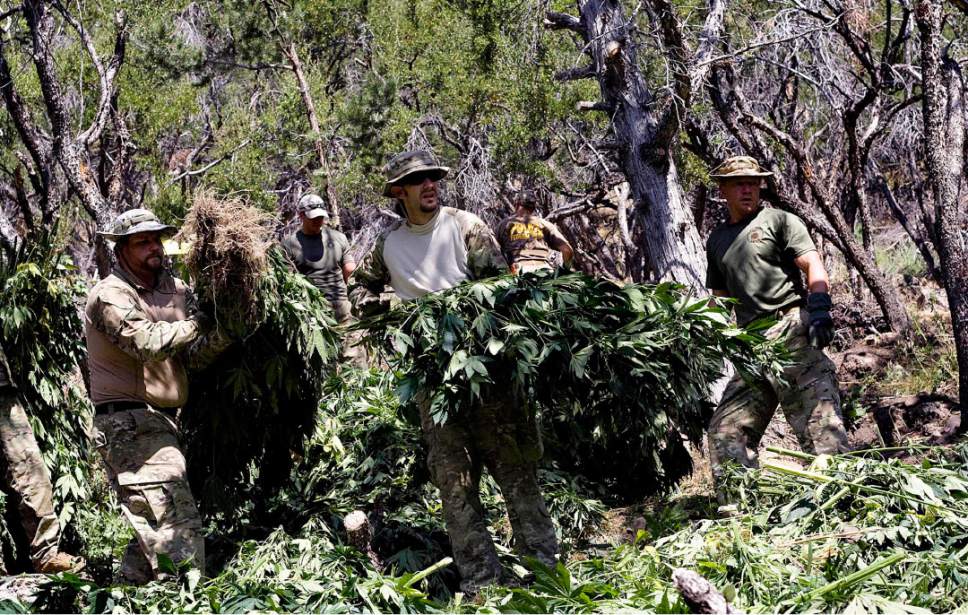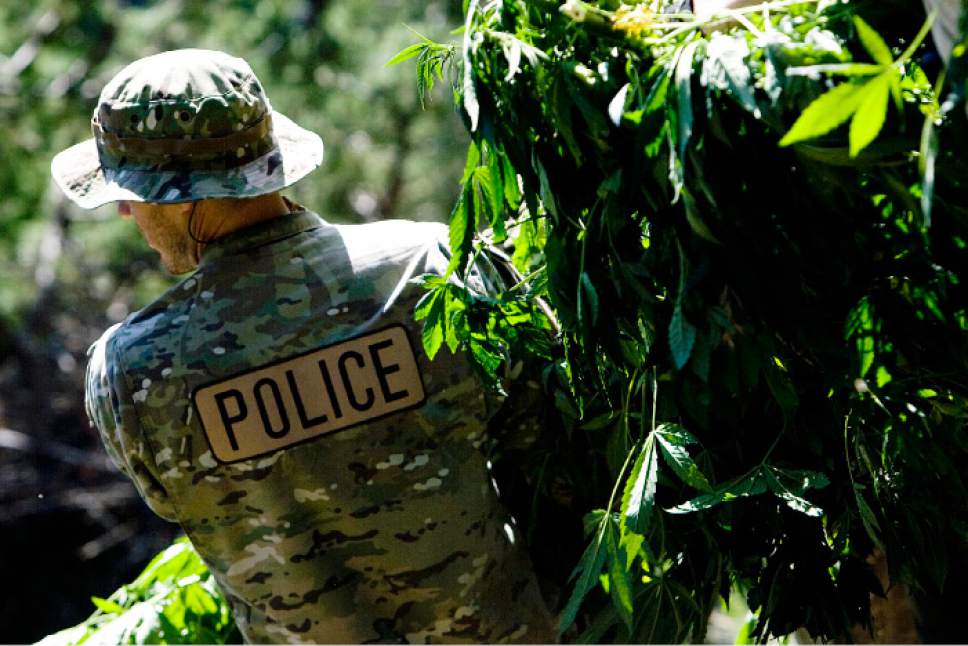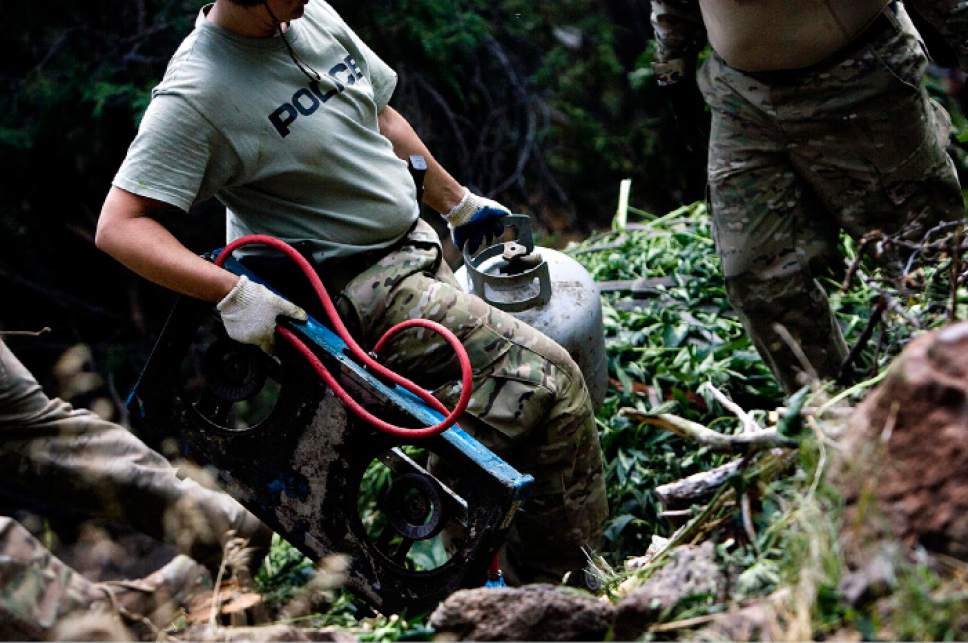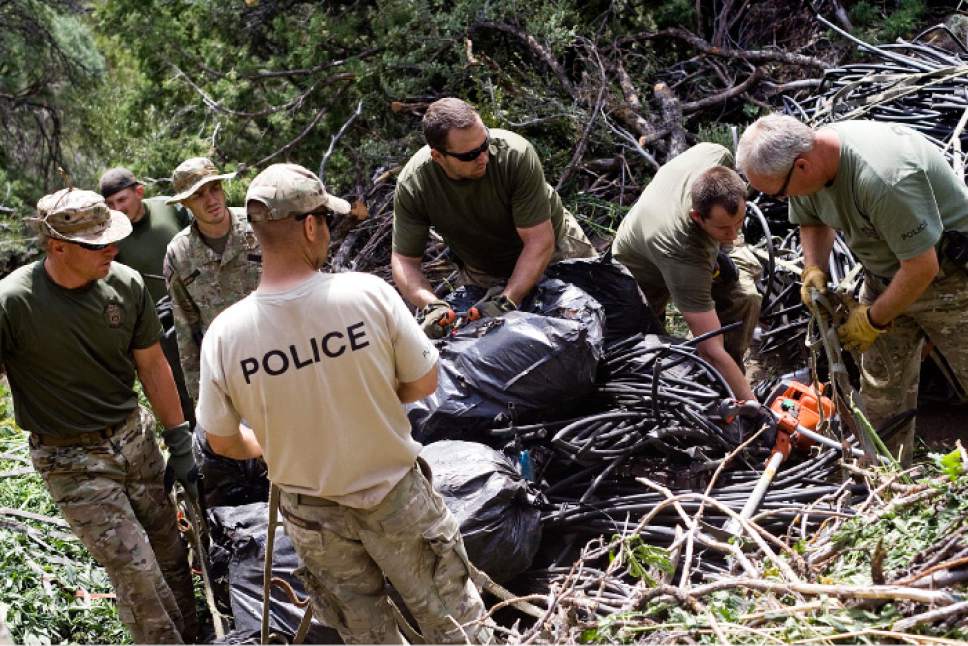This is an archived article that was published on sltrib.com in 2016, and information in the article may be outdated. It is provided only for personal research purposes and may not be reprinted.
For more than three decades, the U.S. Drug Enforcement Administration (DEA) has waged war on America's marijuana farms, doling out millions to state and local law enforcement to fund "eradication operations." With few long-term successes, however, there is a push in Congress to cut down this program considerably.
Should a budget pruning occur, Utah could be among the first targets. According to an investigation of DEA financial documents, released through a public-records request, the program has shelled out nearly $300,000 to Utah law enforcement during the past three fiscal years, with no record of any marijuana plants eradicated.
No other state has shown so little results.
In an interview with The Salt Lake Tribune, Maj. Brian Redd, director of the state Bureau of Investigation within the Utah Department of Public Safety, confirmed the DEA's records, which are meant to reflect any plant eradicated in the state by any agency. Redd said he could not recall any notable outdoor or indoor "grow operations" that had been exterminated in Utah since 2013.
"If there's been any grow that's been taken out," he added, "they should be reflected in those DEA numbers." While there are still a few months before 2016's eradication numbers are complete, the main growing season for marijuana occurs in the summer.
A spokesman for the other Utah organization receiving DEA funding under the program — the Washington County Sheriff's Office — said it has not eliminated any plants since 2011.
"I'm sure there are some outdoor growers, here and there, that we're missing or which are not getting reported," Redd said. "But with full legalization in certain states, it doesn't make a lot of sense to grow in a place like Utah, with all the pressure here from law enforcement. You can grow it in some states legally."
Morgan Fox of the Marijuana Policy Project, the largest U.S. nonprofit dedicated to marijuana reform, called Utah's numbers "nearly impossible" to believe.
"I find this simply mind-boggling," Fox said. "I don't understand how that could be possible year after year — to get the money and not eradicate any plants with it. I've never heard of anything like this."
A review of DEA records shows only New Hampshire came close to Utah's record in the past three fiscal years. In 2015, the Granite State received $20,000 to eliminate 27 plants, adding up to $740 per plant. The national average is $4.21 per plant.
According to tallies from DPS and the Washington County Sheriff's Office, the DEA's funding largely goes toward renting surveillance helicopters, buying equipment, sending officers to trainings and allocating money, if requested, to local agencies.
When it comes time to take down a farm, operations can include DPS officers, local SWAT teams, DEA and immigration agents along with representatives of the U.S. Bureau of Land Management.
Since 2013, roughly half the funding allocated to Utah agencies has been returned to the federal government unspent, due to a lack of activity in the state. According to numbers provided by the agencies, $129,866 has been spent overall since 2013 with no results.
Utah didn't always come up short in its marijuana hunts. While the state has never been a hive of activity like, say, the Pacific Coast states, 78,363 plants were unearthed in 2011, and more than 13,000 in 2012. A single 2008 operation yielded as many as 80,000 plants.
International drug cartels from Mexico used to be well represented in the local pot-growing business, Redd said, operating largely on the state's federal and state parks. But they seem to have moved on.
As the state stopped finding grow operations, the DEA's marijuana-related funding to Utah dried up, shrinking from $150,000 in 2013 to $58,400 this year.
More cuts could be on the way. On average, the DEA has been trimming the program nationwide, and there's a push in the U.S. House to slash the budget in half.
Asked whether it would bother him if the DEA stopped giving Utah money for marijuana eradication altogether, given the consistent lack of results, Redd said it wouldn't.
"I won't speak for whole state, but for us, the impact would be minimal," Redd said. "We'd support local law enforcement, and if we start seeing things reverse [in terms of finding crops], we'd probably seek that assistance again. But the funding is not super-impactful right now."
Chief Deputy Shauna Jones of the Washington County Sheriff's Office disagreed.
The southwestern Utah county has not found any plants in five years and has spent its federal money largely on items such as hiking boots, travel expenses for officers, and unsuccessful helicopter surveillance operations, she said.
"We do believe this [lack of success in finding marijuana crops] is temporary," Jones said. "We will continue to spend funds for investigation, training and preparation for marijuana eradication, should our county once again become an active market for illegal grows."
While Utah has been unsuccessful in finding marijuana grows on public lands, it has nonetheless led the nation in drug-possession convictions on those parcels in recent years. As The Tribune reported in 2013, the vast majority of those cases involve finding small amounts of marijuana.




